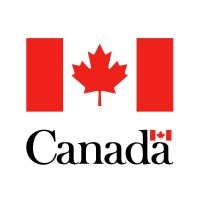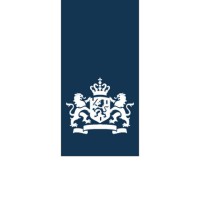
Armed Forces of the Philippines Company Cyber Security Posture
afp.mil.phThe Armed Forces of the Philippines (AFP) are the military forces of the Philippines. It consists of the Army, Navy (including the Marine Corps) and the Air Force. The President of the Philippines is the Commander-in-Chief of the AFP and forms military policy with the Department of National Defense, an executive department acting as the principal organs by which military policy is carried out.
AFP Company Details
armed-forces-of-the-philippines
10,001+ employees
5084
928
Armed Forces
afp.mil.ph
Scan still pending
ARM_2093845
In-progress
Between 800 and 900
This score is AI-generated and less favored by cyber insurers, who prefer the TPRM score.
 AFP Global Score
AFP Global Score.png)

Armed Forces of the Philippines Company Scoring based on AI Models
| Model Name | Date | Description | Current Score Difference | Score |
|---|---|---|---|---|
| AVERAGE-Industry | 03-12-2025 | This score represents the average cybersecurity rating of companies already scanned within the same industry. It provides a benchmark to compare an individual company's security posture against its industry peers. | N/A | Between 800 and 900 |
Armed Forces of the Philippines Company Cyber Security News & History
| Entity | Type | Severity | Impact | Seen | Url ID | Details | View |
|---|
Armed Forces of the Philippines Company Subsidiaries

The Armed Forces of the Philippines (AFP) are the military forces of the Philippines. It consists of the Army, Navy (including the Marine Corps) and the Air Force. The President of the Philippines is the Commander-in-Chief of the AFP and forms military policy with the Department of National Defense, an executive department acting as the principal organs by which military policy is carried out.
Access Data Using Our API

Get company history
.png)
AFP Cyber Security News
Philippine Army Detects Cyberattack on Network Infrastructure
The Philippine Army has verified a breach in its network infrastructure caused by an unnamed cybercrime group. The attack, revealed by ...
Philippines fortifies cyber defense, partnering with Japan, U.S. and others
Across the Philippines' Armed Forces, government agencies and civil society, organizations are strengthening the nation's cybersecurity capabilities and ...
The Philippine army is recruiting young tech civilians to fight cyber attacks
The Philippines, vulnerable to rising cyber threats from China, is calling on young IT professionals to join its military's cyber unit.
Cybersecurity Strategies in Southeast Asia: Brunei and Singapore
This series brings together ten eminent experts to analyze efforts by Southeast Asian nations to fortify their cybersecurity ecosystems and assess the ...
Pre-event review – The Asian Defense and Security Exhibition 2024
Themed “Building on a Decade of Defense Capability”, the event is the Philippines' flagship tri-service event, providing a complete overview of ...
Army holds cybersecurity exercises to find talent
MANILA, Philippines — The Philippine Army held a two-day cyberdefense exercise over the weekend to practice securing the country's ...
‘Adversaries might exploit this’: why Philippine military is boosting security
Colonel Francel Margareth Padilla, spokeswoman for the Armed Forces of the Philippines, made the assurance after Sergeant Korbein Schultz of the ...
Marcos: AFP undergoing upgrades amid cybersecurity threats
President Ferdinand "Bongbong" Marcos Jr. pledged to equip the military with the necessary tools to address national security challenges, ...
AFP boosts cybersecurity amid reports of persistent hacking linked to China
AFP spokesperson Col. Margareth Padilla on Tuesday emphasized President Ferdinand Marcos Jr.'s directive to fortify cyber defenses across ...

AFP Similar Companies

Department of National Defence/Ministère de la défense nationale
The Department of National Defence (DND) is a Canadian government department responsible for defending Canada's interests and values at home and abroad, as well as contributing to international peace and security. DND is the largest department of the Government of Canada in terms of budget as well a

Air Force Space Command
Air Force Space Command, activated Sept. 1, 1982, is a major command with headquarters at Peterson Air Force Base, Colo. AFSPC provides military focused space and cyberspace capabilities with a global perspective to the joint warfighting team. People More than 40,000 professionals assigned to 13

United States Marine Corps
The United States Marine Corps (USMC) is a branch of the United States Armed Forces responsible for providing power projection, using the mobility of the United States Navy, by Congressional mandate, to deliver rapidly, combined-arms task forces on land, at sea, and in the air. The U.S. Marine Corps

Canadian Armed Forces | Forces armées canadiennes
A career in the Canadian Armed Forces is more than a way to make a living. It’s a passport to a whole-life experience that will change you and allow you to change the lives of others. Join an organization that offers more than 100 different trades and professions. Obtain world-class qualification

1st Reconnaissance Battalion, USMC
1st Reconnaissance Battalion (abbreviated as 1st Recon Bn) is a reconnaissance battalion in the United States Marine Corps, 1st Marine Division, I Marine Expeditionary Force (I MEF). The following are examples of missions outlined to 1st Reconnaissance Battalion: • Plan, coordinate, and conduct amp

Ministerie van Defensie
Het Ministerie van Defensie bestaat uit de Koninklijke Marine, de Koninklijke Landmacht, de Koninklijke Luchtmacht, de Koninklijke Marechaussee, het Commando DienstenCentra en de Defensie Materieel Organisatie. Aan het hoofd van de Bestuursstaf (het departement) staat de minister van Defensie. We

Frequently Asked Questions
Explore insights on cybersecurity incidents, risk posture, and Rankiteo's assessments.
AFP CyberSecurity History Information
How many cyber incidents has AFP faced?
Total Incidents: According to Rankiteo, AFP has faced 0 incidents in the past.
What types of cybersecurity incidents have occurred at AFP?
Incident Types: The types of cybersecurity incidents that have occurred include .
Incident Details
What are the most common types of attacks the company has faced?
Additional Questions
What Do We Measure?
















Every week, Rankiteo analyzes billions of signals to give organizations a sharper, faster view of emerging risks. With deeper, more actionable intelligence at their fingertips, security teams can outpace threat actors, respond instantly to Zero-Day attacks, and dramatically shrink their risk exposure window.
These are some of the factors we use to calculate the overall score:
Identify exposed access points, detect misconfigured SSL certificates, and uncover vulnerabilities across the network infrastructure.
Gain visibility into the software components used within an organization to detect vulnerabilities, manage risk, and ensure supply chain security.
Monitor and manage all IT assets and their configurations to ensure accurate, real-time visibility across the company's technology environment.
Leverage real-time insights on active threats, malware campaigns, and emerging vulnerabilities to proactively defend against evolving cyberattacks.




